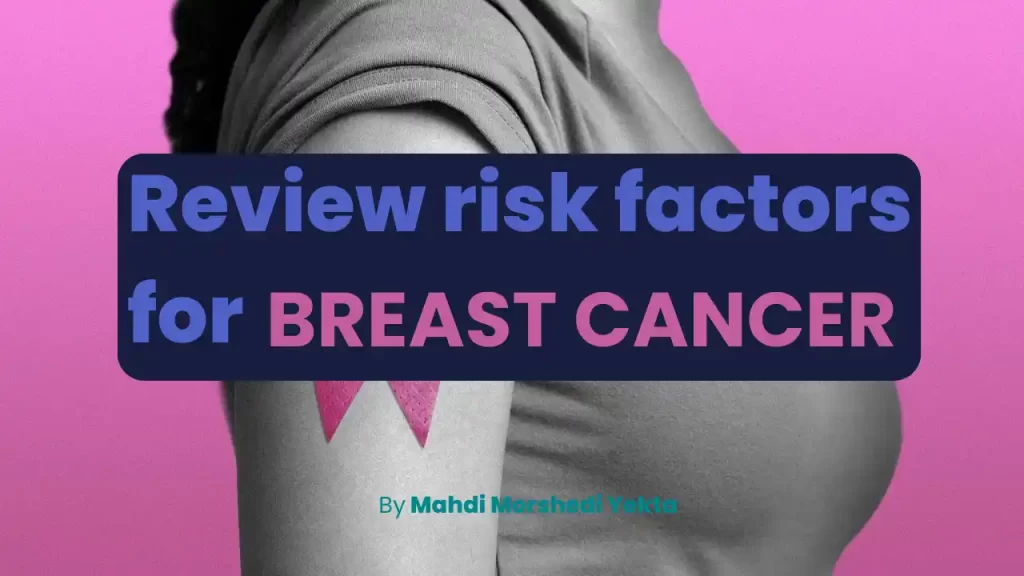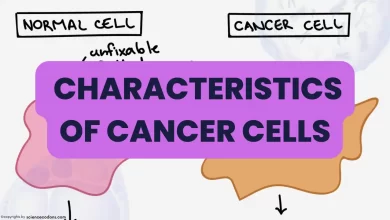Breast cancer is one of the non-communicable and important diseases in women that has a high risk of death if not detected. However, screening methods for this disease lead to early detection and reduction of mortality among women. Breast cancer is the most common type of cancer among women and the second leading cause of cancer death. Early diagnosis of this disease can be very helpful in the treatment process.

Breast cancer begins in breast tissue. The signs of breast cancer include a mass in the breast, a change in appearance, small skin depressions, the discharge of blood or serum from the nipple, a sunken nipple, and dry skin (scaly) of the breast. In patients with metastasis, bone pain, swelling, and enlargement of lymph nodes, shortness of breath, or jaundice may also be seen. Breast cancer risk factors are divided into two categories: non-modifiable risk factors and modifiable risk factors.
Modifiable risk factors for breast cancer
Body mass index over 30: Increased calorie intake in childhood and adolescence increases body weight, which can lead to early menstruation and increased height in adulthood, both of which are associated with an increased risk of breast cancer.
Alcohol: Even low levels of alcohol consumption increase the risk of breast cancer.
Maternal age above 35: Individuals who give birth after the age of 35 have a higher risk of breast cancer than women who give birth earlier.
Radiation exposure: Exposure to high doses of radiation (for the treatment of some diseases), especially if exposure occurs at a young age, is associated with an increased risk of breast cancer. Exposure to low-dose radiation from mammography does not increase the risk of breast cancer.
Oral contraceptives: The risk of breast cancer may be slightly higher in women who are currently using oral contraceptives or who have used oral contraceptives in the past 10 years.
High intake of saturated fats: International studies have shown a higher incidence of breast cancer in countries with higher per capita fat intake. Individuals who consume more calories have an earlier age of onset of first menstruation and a later age of first childbirth, both of which are associated with an increased risk of breast cancer.
Non-modifiable risk factors for breast cancer
Age: The risk of breast cancer increases with age. More than 80% of breast cancer diagnoses are in women over the age of 45, and the average age at diagnosis is 62 years.
Gender: Although breast cancer can affect both genders, less than 1% of all breast cancer cases occur in men.
Family history and genetic mutations: A positive family history increases the risk of breast cancer. Approximately 20-30% of breast cancer patients have a family history of the disease. If a first-degree relative has had breast cancer before menopause, the risk of developing breast cancer in a woman’s lifetime is 30%.
Early onset of menstruation: Women who start menstruating before the age of 11 are at a higher risk of developing breast cancer.
Late onset of menopause: Women who experience menopause after the age of 54 are at a higher risk of developing breast cancer.
Race and ethnicity: Breast cancer incidence rates vary among different racial and ethnic groups.
High socioeconomic status: Women with higher socioeconomic status tend to delay pregnancy and have fewer children, both of which are associated with an increased risk of breast cancer.
Hyperplasia of the breast: Women with a confirmed history of proliferative benign breast disease are at an increased risk of developing breast cancer. However, women with other types of benign breast disease do not have this increased risk.
It is important to note that having one or more of these risk factors does not necessarily mean that a person will develop breast cancer. However, it is important to be aware of these risk factors and to speak with a healthcare professional about ways to reduce your risk.
Breast cancer screening
Breast cancer screening includes examination, testing, mammography, and sonography, through which a doctor can diagnose the first signs of cancer in individuals who have no symptoms yet. Periodic use of breast cancer screening in women over 45 years of age can significantly reduce the mortality rate due to breast cancer. This method can detect all cancers growing slowly at least two years before the mass becomes palpable.
The most important self-care recommendations for preventing are:
- Maintaining a balanced weight
- Avoiding fatty and fried foods, salted and preserved foods, pickles, and canned foods
- Increasing the consumption of fruits, vegetables, grains, and fish meat as it can reduce the incidence of cancer
- by increasing the level of antioxidants.
- Engaging in 30 minutes of physical activity per day
- Avoiding alcohol and smoking
- If you have a breastfeeding child, pay attention to breastfeeding.
- Consult about the risks and benefits of oral contraceptives.
- Consult about the risks and benefits of alternative menopause hormones
Reference:
National Cancer Institute: https://www.cancer.gov/types/breast
